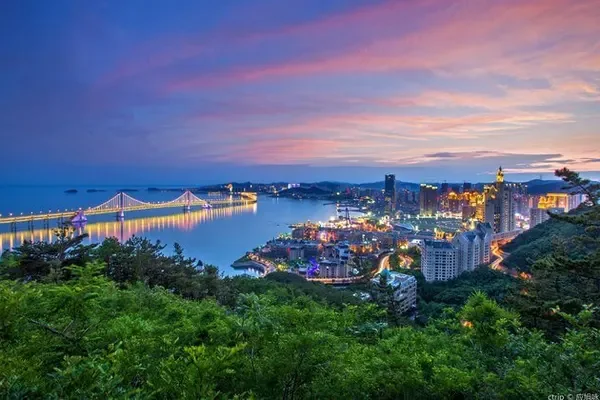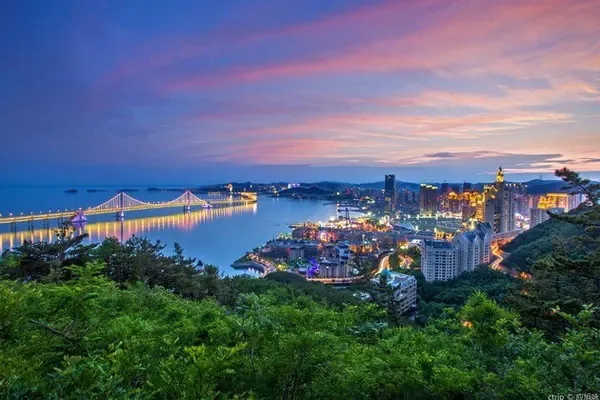The first time I knew about the "Deep Mountain Market" was in Wuhan Hanjie Wanda Plaza in 2018. At that time, the theme of the scene was "Auspicious Birds and Auspicious Flowers". The elderly Miao embroiderers were enthusiastically beating drums, and the batik blue with very ethnic customs ran through it. Among them, mysterious totems, hand-embroidered, sweet fermented wine... uncommon things from deep mountains were placed on the scene, which brought my thoughts to the original secret place thousands of miles away.

Rather than saying that "Deep Mountain Market" is a market, it is more like a platform to display the handicrafts of ethnic craftsmen. The team behind it spent more than ten years in Yunnan, Guizhou, Sichuan and other ethnic minority gathering places, and collected thousands of embroiderers and ethnic traditional patterns, allowing their skills and stories to enter the modern business circle, and let the city's People are more aware of the beauty of ethnic handicrafts.

Coincidentally, this year in the most prosperous CBD business district in Beijing, I encountered Shenshan Bazaar again. This time, the deep mountain market was chosen to be held in the Kerry Center in Beijing, with the theme of "Always On Fair Wu Ye Jia Market · Quiet Environment Blooming" intangible cultural heritage night economic market. What is different from the past is that in addition to the deep mountain market, there is also a night market, which combines the ethnic culture with the vibrancy and fragrance of the capital, creating a petty bourgeois night.

Walking into the basement floor of Beijing Kerry Center, you can still see the totems and batik blue, surrounded by the deep mountain market, like a quiet mountain landscape. The original wooden style, with a large bouquet of dried flowers in straw bamboo baskets, and old-fashioned handlooms quietly standing there, is particularly eye-catching in a shopping mall with a strong commercial flavor.

Looking around, the models at the door are dressed in national costumes, and the long costumes hang down to the ground, as stunning as a fairy in the world. The embroidery on the skirt is an intangible cultural heritage Miao embroidery technique, which is made by women who embroidered in the deep mountains slowly and meticulously. The production cycle is long and the process is cumbersome. In today's impetuous society, I am afraid that few people are willing to spend a lot of time polishing a piece of clothing.

Miao embroidery elements extend from clothing to rattan bags, to the auspicious flower patterns on notebooks, and then to the popular Bubble Mart, all of which carry the temperature of the embroiderers' fingertips. What is sold is a piece of art, but also a feelings. According to the embroiderer at the scene, although every girl of the Miao nationality can do Miao embroidery, there are fewer and fewer young girls who have learned the truth, and the old Miao people are not in good health, which has led to the decline of Miao embroidery.

I carefully looked at the 8cm auspicious flower pattern on the blue notebook. Regardless of the small flower, it needs about 1,200 stitches, and even an experienced embroiderer would need a day to complete it. Perhaps this is the charm of Miao embroidery, which is silent but lively, and it is full of vistas through the hands of the embroiderer.

In addition to the intangible cultural heritage skills from the deep mountains, there are also intangible cultural heritage crafts from Beijing. Beijing velvet flowers (birds) originated in the court of the Qing Dynasty, and then slowly flowed into the folks, becoming one of the "Four Wonders" of Beijing Flower Market Street in the past. This is the velvet flower headdress worn by the daughters in the 87 edition of "Dream of Red Mansions".

Beijing velvet flowers (birds) are made of mulberry silk and copper wire. From silk to embroidered velvet, to the finished product, there are more than 30 complicated processes. The craftsmen use their hands to polish them almost without mechanical force. Therefore, each velvet flower (bird) is different, generous and unique, which makes people stop and stay.

At this time, as night falls, the lights of Beijing International Trade Business District gradually turn on, and the outdoor water curtain garden of Beijing Kerry Center switches from the quietness of the day to the slightly drunk night mode, where handmade cultural creations, accessories, artworks, flowers, Cocktail and other stalls gather here, and the night market quietly opens.

On the side of the intangible cultural heritage handmade cultural and creative booth, many craftsmen gathered. They were either weaving Chinese knots, or concentrating on embroidery, or showing batik skills. From drawing to rendering, they showed the stories behind the intangible cultural heritage crafts.


At these stalls, you can not only appreciate the purchase, but also experience the production process in person, which attracts many passers-by. I also joined in, picked out my favorite patterns, and personally experienced a printing and dyeing technique.


On the other side, the night market stalls with an assortment of delicacies, musical instruments, children's toys, accessories and other good things are also in full swing. Some of them are idle good things, which is another highlight of Wuyejia Market. There are many white-collar workers in the CBD area. The stalls increase income and solve the separation, which is the most fashionable way of life today.


A cool rock band was also invited to the scene, and Xiu Niang of the Yi nationality in Chuxiong, Yunnan Province also joined in. The loud and clear singing pierced the night sky of the capital and echoed in this small independent world. Just walk around and immerse yourself in the sound of music, relax and enjoy the early autumn night.



